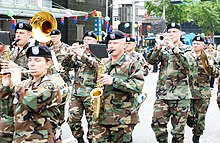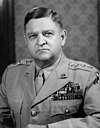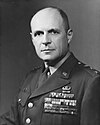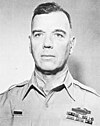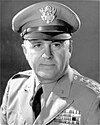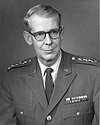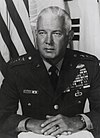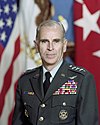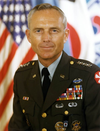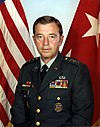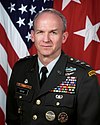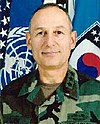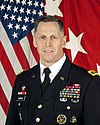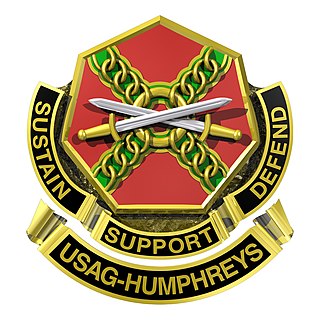
The 101st Airborne Division (Air Assault) ("Screaming Eagles") is a light infantry division of the United States Army that specializes in air assault operations. It can plan, coordinate, and execute multiple battalion-size air assault operations to seize terrain. These operations can be conducted by mobile teams covering large distances, fighting behind enemy lines, and working in austere environments with limited or degraded infrastructure. Its unique battlefield mobility and high level of training have kept it in the vanguard of U.S. land combat forces in recent conflicts: for example, foreign internal defense and counterterrorism operations in Iraq, in Afghanistan in 2015–2016, and in Syria, as part of Operation Inherent Resolve in 2018–2021.
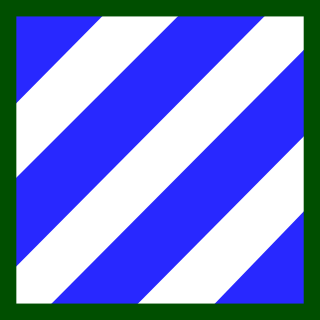
The 3rd Infantry Division (3ID) is a combined arms division of the United States Army based at Fort Stewart, Georgia. It is a subordinate unit of the XVIII Airborne Corps under U.S. Army Forces Command. Its current organization includes a division headquarters and headquarters battalion, two armored brigade combat teams,one aviation brigade, a division artillery, a sustainment brigade and a combat sustainment support battalion along with a maneuver enhancement brigade. The division has a distinguished history, having seen active service in World War I, World War II, the Korean War, and the Global War on Terror. The Medal of Honor has been awarded to 61 members of the 3rd Infantry Division, making the division the most honored in the Army.
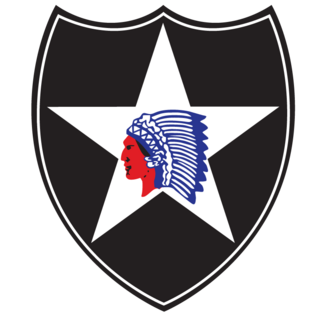
The 2nd Infantry Division ("Indianhead") is a formation of the United States Army. Its current primary mission is the pre-emptive defense of South Korea in the event of an invasion from North Korea. There are approximately 17,000 soldiers in the 2nd Infantry Division, with 10,000 of them stationed in South Korea, accounting for about 35% of the United States Forces Korea personnel.
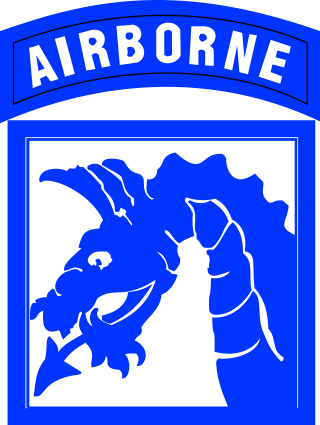
The XVIII Airborne Corps is a corps of the United States Army that has been in existence since 1942 and saw extensive service during World War II. The corps is designed for rapid deployment anywhere in the world and is referred to as "America's Contingency Corps." Its headquarters are at Fort Liberty, North Carolina.

The United States Army Pacific (USARPAC) is an Army Service Component Command (ASCC) designated by the Secretary of the Army (SECARMY); it may also serve as a Joint Task Force headquarters. It is the army component unit of the United States Indo-Pacific Command, and its mission is to support the Commander, United States Indo-Pacific Command. The main areas that this command has jurisdiction in include Alaska, Hawaii, the Pacific Ocean, Japan, and South Korea. It also performs missions in Southeast Asia, in the countries stretching from the Philippines all the way to Bangladesh and India. United States Forces Korea (USFK) has had operational command and control of US Forces in Korea since January 2012, and USARPAC headquarters oversees the manning, training, and equipping of US Army forces assigned to USFK.

The 1st Cavalry Division is a combined arms division and is one of the most decorated combat divisions of the United States Army. It is based at Fort Cavazos, Texas. It was formed in 1921 and served during World War II, the Korean War, the Vietnam War, the Persian Gulf War, with the Stabilization Force in Bosnia-Herzegovina, in the Iraq War, in the War in Afghanistan as well as Operation Freedom's Sentinel and Operation Inherent Resolve. As of July 2023, the 1st Cavalry Division is subordinate to III Armored Corps and is commanded by Major General Kevin D. Admiral.

The 9th Infantry Division is an inactive infantry division of the United States Army. It was created as the 9th Division during World War I, but never deployed overseas. In later years it was an important unit of the U.S. Army during World War II and the Vietnam War. It was also activated as a peacetime readiness unit from 1947 to 1962 at Fort Dix, New Jersey, and Fort Carson, Colorado, and from 1972 to 1991 as an active-duty infantry division at Fort Lewis, Washington. The division was deactivated in December 1991.

The 6th Infantry Division was an infantry division of the United States Army active in World War I, World War II, and the last years of the Cold War. Known as "Red Star", it was previously called the "Sight Seein' Sixth".
Camp Stanley is a former U.S. Army military camp located just east of the city of Uijeongbu, South Korea. The camp is part of the Red Cloud Garrison which is composed of Army installations near the Korean Demilitarized Zone (DMZ).
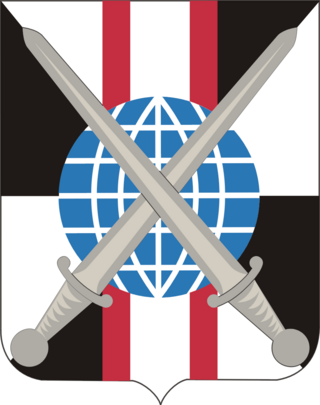
The 719th Military Intelligence Battalion, operates a partial strategic/partial tactical mission. The battalion is located at Zoeckler Station, a sub-installation of Camp Humphreys, Republic of Korea. It is subordinate to the 501st Military Intelligence Brigade and has three subordinate companies, A Co, B Co and HHSC.
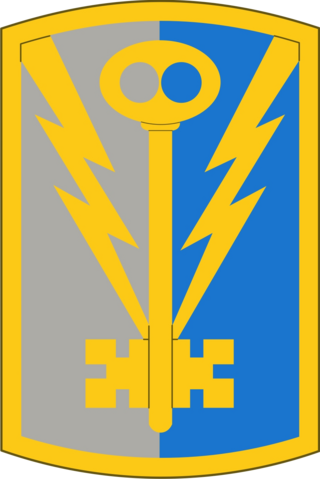
The 501st Military Intelligence Brigade is a United States Army unit, assigned to the United States Army Intelligence and Security Command (INSCOM) under the operational control of United States Forces Korea (USFK) located in South Korea. The 501st MI Brigade conducts theater level multi-discipline intelligence collection and analysis, aerial Intelligence Surveillance & Reconnaissance (ISR), and security operations in support of Eighth United States Army, U.S. Army Pacific, U.S. Pacific Command, U.S. Forces Korea, and other national level agencies.
Camp Coiner is a former 55-acre (220,000 m2) United States Forces Korea installation located on the northern part of Yongsan Garrison located in Seoul, South Korea. It was named after 2nd Lieutenant Randall Coiner assigned to the 3rd Battalion, 31st Infantry Regiment of the 7th Infantry Division who was posthumously awarded the Silver Star for actions taken in 1953 during the Korean War near the village of Sokkagae.
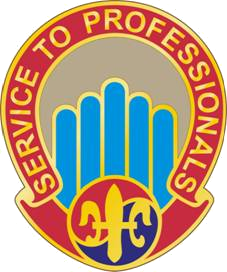
The 2nd Infantry Division/ROK-US Combined Division Sustainment Brigade is a sustainment brigade of the United States Army. It provides logistical support to the 2nd Infantry Division, the Republic of Korea Army's 8th Infantry Division, and all U.S. Army Units garrisoned on the Korean Peninsula. Formerly the 501st Sustainment Brigade, it was reflagged the 2ID SBDE on 7 July 2015 and became a direct reporting unit to the 2nd Infantry Division.

In the United States (US) military, a beret flash is a shield-shaped embroidered cloth that is typically 2.25 in (5.72 cm) tall and 1.875 in (4.76 cm) wide with a semi–circular base that is attached to a stiffener backing of a military beret. These flashes—a British English word for a colorful cloth patch attached to military headgear—are worn over the left eye with the excess cloth of the beret shaped, folded, and pulled over the right ear giving it a distinctive appearance.
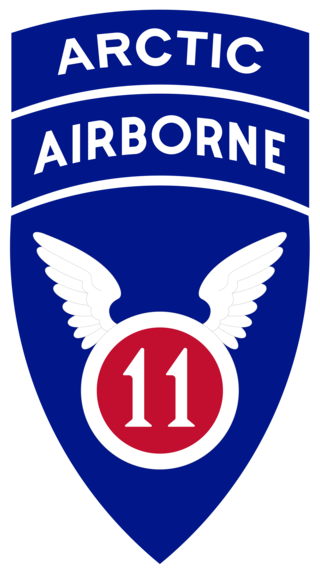
The 2nd Infantry Brigade Combat Team (Airborne), 11th Airborne Division is an airborne infantry brigade combat team (BCT) of the United States Army. The unit is stationed at Joint Base Elmendorf-Richardson in Anchorage, Alaska and is the only airborne brigade combat team in the Pacific Theater. It is also the newest airborne Infantry BCT and one of only five in the United States Army; the others are the three Infantry BCTs of the 82nd Airborne Division and the 173rd Airborne Brigade.

The 1st Signal Brigade is a military communications brigade of the United States Army subordinate to the Eighth United States Army and 311th Signal Command in Hawaii, and located at Camp Humphreys in South Korea.

The U.S. Army Garrison Camp Long is located near Wonju, South Korea. This camp was named in honor of Sergeant Charles R. Long of the U.S. Army, who received the Medal of Honor for his actions nearby in 1951 during the Korean War. Sergeant Long was acting as a forward observer in Company M of the 38th Infantry Regiment, 2nd Infantry Division when he was killed in action.

The 525th Expeditionary Military Intelligence Brigade (Expeditionary) is a unit of the United States Army specializing in the acquisition and analysis of information with potential military value. On 28 October 2014, the unit was reflagged from the "525th Battlefield Surveillance Brigade" to an expeditionary military intelligence brigade, the first of its kind.
In 1989, the United States Army Pacific had its headquarters at Fort Shafter in Hawaii, and its units were stationed within the United States. Overseas forces included the US Army Japan, and the Eighth US Army in South Korea.









